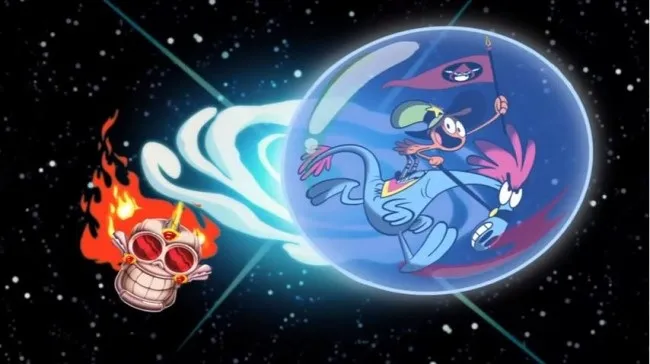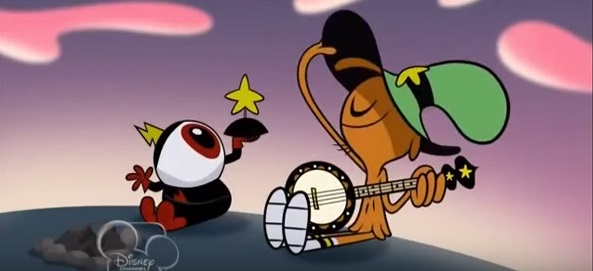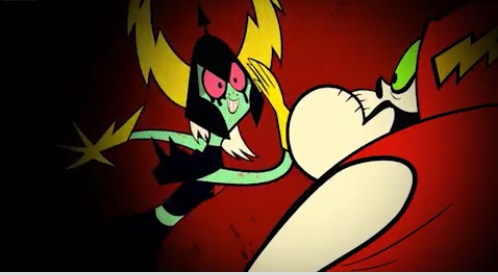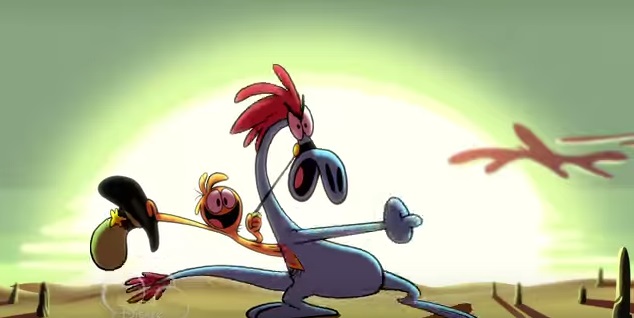We’re in a renaissance of television animation at the moment. As the medium’s come to be taken more seriously in the West and been given more leeway in the kinds of stories it tells, there’s been a push to grapple with more substantive content. There was Aang’s struggle to remain a pacifist in Avatar: The Last Airbender, Adventure Time’s later seasons have flirted with a bizarre existentialist sort of vibe, and Steven Universe is hard at work trying to grapple with the question of whether peace, love and understanding can really heal all wounds.
By that same token, the gulf between those more experimental series and animation “for kids” seems to grow wider by the day, leaving some shows to fall into the gulf of growing pains the medium is currently experiencing. On the one hand, shows like Steven Universe are appealing to a broad audience intentionally (the episode “Bismuth” ranked number one in ratings for the P18-49 demographic when it aired), as opposed to peripheral audience that have always sort of existed around shows like Spongebob and My Little Pony or the brief spate of shows from MTV’s dearly departed animation division (which ran more toward the late teens-to-adults audience that The Simpsons had carved out a space for). But while Cartoon Network and now Netflix (leading with the new Voltron) have embraced the change in intended viewing audience to a broader spectrum, Disney still seems to operate on a binary (so what else is new).
This is how Wander Over Yonder found itself falling into relative obscurity (you can read an overview of the show here). Have a seat and let me tell you the sad tale, readers. The show was created by Craig McCracken, creator of The Powerpuff Girls, Foster’s Home for Imaginary Friends, and one of the most pedigreed names in TV animation since the 1990s. It had Lauren Faust as part of its crew in the first season, before she went on to work on her own individual projects, and Noelle Stevenson of LumberJanes in season 2. And yet, all of that talent couldn’t save it from an early grave, with only two out of three planned seasons making it to air.
News of the show’s cancellation reached the team after season two had been written but before it had even premiered–Disney thought that 80 episodes was “enough,” and the fact that the show garnered better ratings in repeats than premieres seemed to bolster that. While the crew was both open and optimistic in their discussions about Disney’s handling of the show, as a fan it was pretty disheartening to see that Disney both refused to let the show take a serialized turn in season 2 (which discourages repeat viewings) and then doubling down on that by cancelling the show once there were enough episodes to squeeze some rerun money out of (the latter is perhaps my own mildly cynical take).
The compromise the writers reached after being turned down for serialization–to have four 22 minute “plot” episodes and the rest as 11 minute stand-alones–earned the series a bit more time in the spotlight (including a review slot on the AV Club), but also some accompanying frustration from fans who came in looking for a more narrative-driven, Gravity Falls sort of experience rather than a stylistic hybrid. Wander Over Yonder is a weird, earnest show that was only starting to find its niche before it was cancelled (the letter writing campaign is really quite moving, though now that the crew has all moved onto different projects, a comeback has become an increasingly long shot). And that’s a terrible shame.
I tell you all of that partly because the show’s production history, with the unusual openness on the part of the (very kind) crew, has been an interesting insight into the current Western animation landscape. But I also just wanted to give the show a eulogy, because it was truly something special. When I initially reviewed the show I told y’all about the bright colors and the sincerity and the really clever homages to classic animation. And I’ll repeat what I said then: Wander, as a protagonist, is very special.
I stumbled on this show when I was in a particularly low place–something I can see clearly now, even if at the time it felt normal. It was surprising and unexpected to be able to watch an idealistic character who wasn’t young and inexperienced, but who had seen the horrors life had to offer and fought to hold onto the belief that hope and trust are worth holding onto. That enemies are friends you haven’t made yet.
And yes, the real world is more complicated than that. I love seeing Steven Universe tackle mental illness and trauma in raw ways that can sometimes be difficult to watch. It’s downright important art. But as much as that show can be uplifting, it’s also challenging, and there have been times when I wasn’t up for that. Wander was there for me in that moment, set in a universe that was purely, beautifully aspirational and hopeful at every turn. It’s not a perfect show (there are certainly critiques I could make about the early writing for Dominator, much as I found her a fun character), but it is a deeply comforting one. It was smart in its willingness to be silly, inventive in its form, and endearing in its constant attempts to do better. Its moments of quiet could be breathtaking (one late-game episode evokes the quiet melancholy of The Little Prince), and its goofiness was often inspired (I’m still not over Weird Al as an Evil Supervillain Banana).
It deserved more than it got, and more notoriety than it will probably have in future (given Disney’s disinterest in more than a handful of merch and its current unavailability for easy streaming). But that doesn’t make its existence less special or worthwhile, and I’d encourage you to give it a shot. In the meantime, a very fond farewell. And to the WOY crew, my deepest thanks for putting on one heck of a show.
Want more stories like this? Become a subscriber and support the site!
Want to share this on Tumblr? There’s a post for that!
Vrai is a queer author and pop culture blogger; it’s possible they’re still kind of heart-eyed over Dom. You can read more essays and find out about their fiction at Fashionable Tinfoil Accessories, support their work via Patreon or PayPal, or remind them of the existence of Tweets.
—The Mary Sue has a strict comment policy that forbids, but is not limited to, personal insults toward anyone, hate speech, and trolling.—
Follow The Mary Sue on Twitter, Facebook, Tumblr, Pinterest, & Google+.












Published: Aug 20, 2016 11:00 am